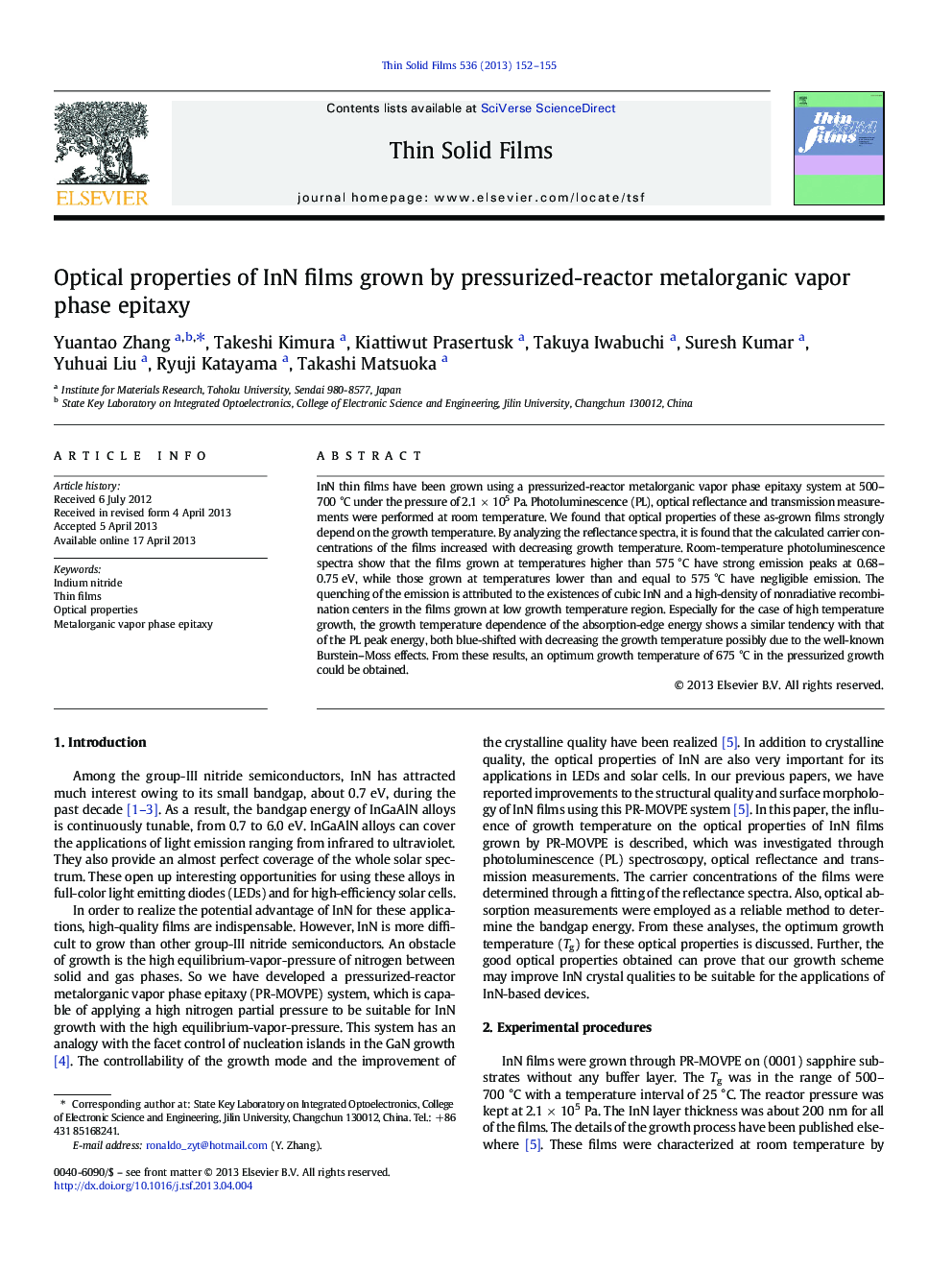| Article ID | Journal | Published Year | Pages | File Type |
|---|---|---|---|---|
| 8036711 | Thin Solid Films | 2013 | 4 Pages |
Abstract
InN thin films have been grown using a pressurized-reactor metalorganic vapor phase epitaxy system at 500-700 °C under the pressure of 2.1 Ã 105 Pa. Photoluminescence (PL), optical reflectance and transmission measurements were performed at room temperature. We found that optical properties of these as-grown films strongly depend on the growth temperature. By analyzing the reflectance spectra, it is found that the calculated carrier concentrations of the films increased with decreasing growth temperature. Room-temperature photoluminescence spectra show that the films grown at temperatures higher than 575 °C have strong emission peaks at 0.68-0.75 eV, while those grown at temperatures lower than and equal to 575 °C have negligible emission. The quenching of the emission is attributed to the existences of cubic InN and a high-density of nonradiative recombination centers in the films grown at low growth temperature region. Especially for the case of high temperature growth, the growth temperature dependence of the absorption-edge energy shows a similar tendency with that of the PL peak energy, both blue-shifted with decreasing the growth temperature possibly due to the well-known Burstein-Moss effects. From these results, an optimum growth temperature of 675 °C in the pressurized growth could be obtained.
Related Topics
Physical Sciences and Engineering
Materials Science
Nanotechnology
Authors
Yuantao Zhang, Takeshi Kimura, Kiattiwut Prasertusk, Takuya Iwabuchi, Suresh Kumar, Yuhuai Liu, Ryuji Katayama, Takashi Matsuoka,
